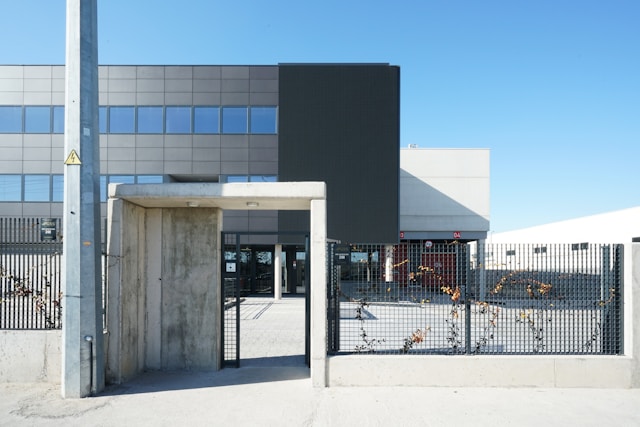United States Commercial Property Prices Per Square Foot in 2024

The United States is home to one of the world’s largest commercial real estate markets, accounting for nearly 40% of all real estate globally. The latest data from 2024 show that this market generates revenues in excess of $1 trillion, and 16 of the world’s 30 most competitive commercial property markets are located in the United States.
Early 2024 data show that the average asking price per square foot for US offices stands at $37. Retail averages out to $23 per square foot, and industrial space comes in at just under $8 per square foot. However, there are significant variations in average prices based on location and real estate class.
Here’s a summary of the average commercial property rates in key USA cities:
Contents
- 1 Current Rates for Commercial Real Estate in Core US Markets
- 1.0.1 New York: Average gross rates for Manhattan offices are $71 per square foot
- 1.0.2 Los Angeles: $41 / sq ft for offices
- 1.0.3 San Francisco: $60 per square foot for office space
- 1.0.4 Miami: Just under $50 per square foot for offices
- 1.0.5 Boston: $49 per square foot per year for metro offices
- 1.0.6 Austin: Office space averages $42 per square foot
- 1.0.7 Washington D.C.: Offices average $40 per square foot
- 1.0.8 Philadelphia: $38 per square foot for offices
- 1.0.9 Seattle: $37 per square foot for offices
- 1.0.10 Atlanta: $36 per square foot for office space
- 1.0.11 Chicago: Approximately $28 per square foot for office space
- 1.0.12 Dallas: $29 per square foot for offices
- 2 How to Calculate Price Per Square Foot in the USA
- 3 Trends Impacting Price Per Square Foot
Current Rates for Commercial Real Estate in Core US Markets
New York: Average gross rates for Manhattan offices are $71 per square foot
Industrial space averages $26 / sq ft / year
Retail: $57 / sq ft city-wide
Los Angeles: $41 / sq ft for offices
$19/ sq ft / year for industrial premises
Retail: $36 / sq ft
San Francisco: $60 per square foot for office space
Industrial: $27 / sq ft
Retail: $38 /sq ft
Miami: Just under $50 per square foot for offices
$15 / sq ft for industrial space
Retail: One of the priciest markets in the nation at just under $44 /sq ft
Boston: $49 per square foot per year for metro offices
Industrial properties: $15 / sq ft / year
Retail: $22 / sq ft
Austin: Office space averages $42 per square foot
Industrial: $11 / sq ft / year
Retail: $26 / sq ft
Washington D.C.: Offices average $40 per square foot
Industrial: $15 / sq ft / year
Retail: $32 / sq ft
Philadelphia: $38 per square foot for offices
$12 / sq ft / year for industrial properties
Retail: $26 / sq ft
Seattle: $37 per square foot for offices
Industrial: just under $18 / sq ft / year
Retail: $28 / sq ft
Atlanta: $36 per square foot for office space
Industrial space is charged at an average of $8 / sq ft / year
Retail: $21 / sq ft
Chicago: Approximately $28 per square foot for office space
Industrial premises average $9 / sq ft / year
Retail: under $19 / sq ft
Dallas: $29 per square foot for offices
Industrial rates: $5 / sq ft / year
Retail: $23 / sq ft

How to Calculate Price Per Square Foot in the USA
In the majority of markets, per square feet prices are calculated and quoted on an annual basis.
However, in some states (such as California) commercial real estate prices are quoted monthly. Generally speaking, to calculate base rates, the total rent amount is multiplied by the square footage leased.
Example: A 5,000-sq ft office at $40 / sq ft
40 * 5,000 = $200,000 / year or 200,000 / 12 = $16,700 / month.
Other factors to take into account include tenant incentives in the form of rent-free periods, and the type of lease structure, since each lease type comes with different inclusions and exclusions that affect the final calculation.
For example, properties leased under a gross or full-service structure may be quoted at a higher rate, since the majority of operating expenses are included as part of the base rent and passed onto tenants. On the other hand, a commercial property leased under a triple net lease (NNN) may have a lower asking price, but operational expenses will need to be paid for separately.
In addition, macroeconomic policy, employment trends, and market conditions such as the demand-supply ratio and vacancy rates may affect the price per square foot of commercial properties.
Trends Impacting Price Per Square Foot
One of the most significant trends affecting commercial real estate transactions in the USA is related to the increase in interest rates that took place in March 2022. This put pressure on real estate prices, leading to a price correction that in some cases has reversed the gains made during the previous 2 years.
Overall, there has been a 22% decrease between 2022 and 2024 in sale prices, as well as slow rental growth for office properties averaging 0.7% nationwide. This is in contrast to rental growth rates of 5.5% for industrial properties, which still benefit from the ongoing e-commerce boom and the solidification of online consumer habits.
The above, combined with ongoing changes in the use of office buildings, and also in physical retail space trends, has resulted in reduced demand for these assets, with the exception of best-in-class properties in the most desirable markets. These trends have had a softer impact on industrial property prices.
The short-term outlook sees retail commercial properties recovering from their post-pandemic contraction and a stabilization of retail property prices. Industrial price increases are expected to become more moderate, although there’s still room for rental growth. The biggest unknown involves non-Class A offices across the country: whether they will be upgraded (which would lead to increased lease prices to cover for cost of updating them), or whether they will become obsolete, which would drive prices even further for best-in-class office assets across the country.

Further Insights
Interested in learning more about what contributes to office space pricing or commercial real estate investment in major US markets? Or do you want the lowdown on broad commercial real estate trends in the United States? You can find more of our latest stories below.
Top Ten Largest CBDs in the USA
The Cost of Renting Office Space in Boston
Analyzing the Cost of Office Space in Washington DC
Commercial Real Estate Depreciation – How Does It Work?
NYC Office Space Rental: A Cost Analysis
Cost of Office Space in San Francisco vs LA Office Rental Prices
Mixed-Use Commercial Property: What You Need to Know
8 Benefits of In-Person Meetings: Meeting in Person vs Online
Remote Work Statistics: How Different Generations Feel About Working Remotely
A New Corporate Vision: How Millennials and Gen Z are Championing CSR and Sustainability